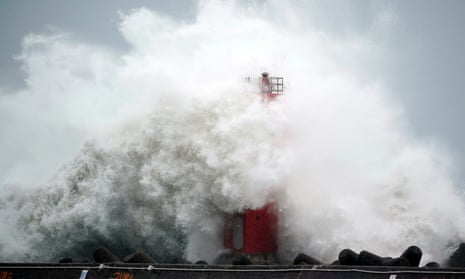Two million people in Japan have been told to seek shelter before the arrival of Typhoon Nanmadol, the national broadcaster, NHK, said, as the weather agency issued a rare “special warning” about the powerful storm.
NHK, which compiles alerts issued by local authorities, said level four evacuation instructions – the second highest – were in place for people in Kagoshima, Kumamoto and Miyazaki in the southern Kyushu region.
Japan’s weather agency had issued its highest alert for the Kagoshima region. It is the first typhoon-linked special warning issued outside the Okinawa region since the current system began in 2013.
Typhoon Nanmadol was carrying gusts of up to 270km/h (168mph) on Saturday near the remote Minami Daito island, 400km (250 miles) east of Okinawa island, the weather agency said.
The storm is expected to approach or make landfall on Sunday in the southern Kagoshima prefecture in Kyushu, then move north the next day before heading towards the main Japanese island.
“There are risks of unprecedented storms, high waves, storm surges, and record rainfall,” said Ryuta Kurora, the head of the Japan Meteorological Agency’s forecast unit.
“Maximum caution is required,” he said, urging people to evacuate early. “It’s a very dangerous typhoon.”
“The wind will be so fierce that some houses might collapse,” Kurora added, warning that flooding and landslides might also occur.
Japan is in typhoon season and is hit by about 20 such storms a year, routinely seeing heavy rains that cause landslides or flash floods.
Scientists say climate breakdown is increasing the severity of storms and causing extreme weather such as heatwaves, droughts and flash floods to become more frequent and intense.









